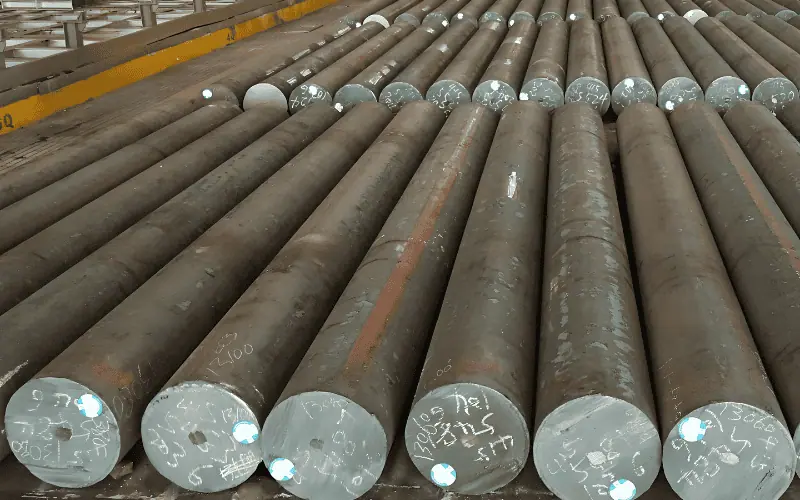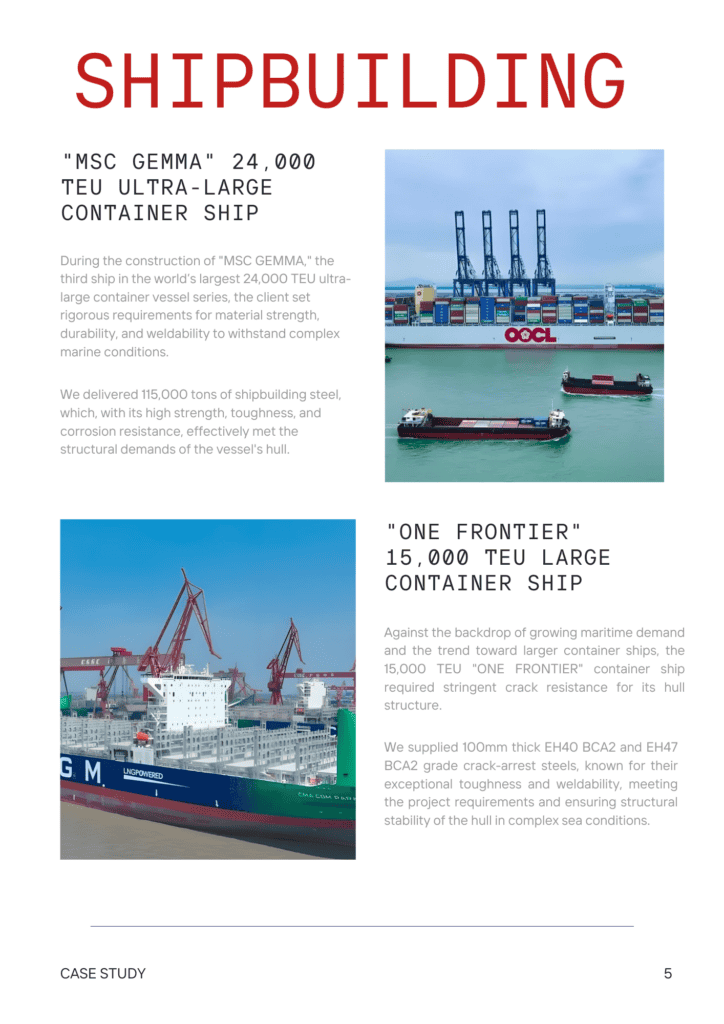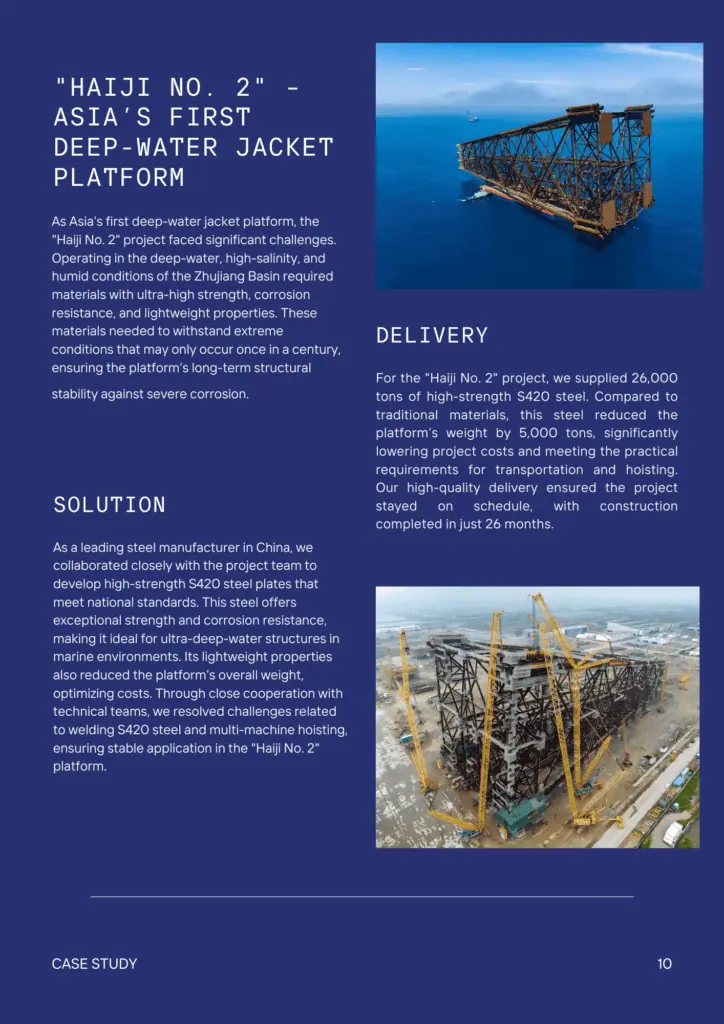Contents
What Is Tool Steel? Properties, Types, Uses
- John

As a worldwide expert in steel production, SteelPro Group recognizes the critical importance of tool steel in demanding applications. This article examines its essential characteristics, classifications, and applications to guide you in selecting the ideal option.
What Is Tool Steel?
Tool steel is a premium-grade carbon or alloy steel valued for its durability, abrasion resistance, and ability to maintain strength at elevated temperatures. Its strength and toughness come from carbide-forming elements like tungsten, molybdenum, chromium, and vanadium, while cobalt and nickel ensure excellent performance at elevated temperatures. Ideal for tools and tooling, it excels in high-stress applications such as cutting, stamping, and molding.
Tool Steel Properties
- The high hardness remains intact under extreme conditions.
- Excellent wear resistance to withstand friction and abrasion.
- Strong toughness to prevent cracking or fracturing under stress.
- Exceptional heat resistance to maintain strength at high temperatures.
- Good corrosion resistance to prevent rust and oxidation.
- Superior dimensional stability under high stress.
- Exceptional Load-Bearing Capacity to Withstand High Pressure.
Different Types of Tool Steel
Tool steel is classified into six main types based on its composition, heat treatment, and intended use.
Water-Hardening Tool Steel
Water-hardening tool steels (often designated as W-series) are the simplest and least expensive type of tool steel. They are primarily hardened by quenching in water, which provides high hardness after heat treatment.
Key Features:
- High hardness after water quenching.
- Moderate wear resistance.
- Low impact toughness.
- Suitable for tools that do not experience high impact or shock.
- Typically used for cutting tools, dies, and molds in low-stress applications.
Hot Work Tool Steel
Hot work tool steels, often categorized as H-series, are designed specifically for tools used in high-temperature processes like die-casting, extrusion, and forging, where the material must endure extreme heat and significant stress. These steels must retain their strength and resist wear at elevated temperatures.
Key Features:
- Good resistance to thermal fatigue and heat cracking.
- Excellent high-temperature performance.
- Used for tools that are exposed to high temperatures during manufacturing processes.
- Common types include H13, known for its excellent hot-working properties and resistance to thermal shock.
Cold Work Tool Steel
Cold work tool steels (designated as O, A, D, and others) are used for applications where tools are exposed to room temperature but need to resist wear, deformation, and abrasion. These steels are designed to retain their hardness and shape at lower temperatures.
Key Features:
- Excellent wear resistance and hardness.
- Good dimensional stability.
- Ideal for forming tools, punches, dies, and other components that work under low temperatures but high pressure.
- Common types include O1 (oil-hardening), A2, and D2 (high carbon, high chromium steels).
Shock-Resisting Tool Steel
Shock-resisting tool steels (denoted as S-series) are designed for tools that experience heavy shock or impact loads, such as hammers, chisels, and punches. These steels are highly resistant to fracture or chipping under tough conditions.
Key Features:
- Excellent toughness and impact resistance.
- Good wear resistance, though not as high as cold work or high-speed steels.
- Ideal for tools that undergo repeated shock, such as hand tools, chisels, and dies used in punching and stamping operations.
High-Speed Tool Steel
High-speed steels (typically M-series, T-series, and H-series) are designed for cutting tools that operate at high speeds and elevated temperatures. These steels are capable of maintaining their hardness even at red-hot temperatures, making them ideal for high-speed machining operations.
Key Features:
- Exceptional hardness and wear resistance at high temperatures.
- Retains sharp cutting edges at elevated speeds.
- Excellent heat resistance, typically used in drills, mills, and lathes.
- Types include M2 (most common high-speed steel), T1, and M42.
Special Purpose Tool Steel
Special-purpose tool steels are designed for highly specific applications, addressing unique performance requirements not met by standard tool steels.
P-Type Tool Steel (Plastic Mold Steels)
P-type tool steels are designed specifically for plastic injection molding and zinc die-casting applications. These steels offer excellent resistance to wear, corrosion, and thermal stress, making them ideal for molds exposed to high-pressure, high-temperature environments.
L-Type Tool Steel (Low Alloy)
L-type steels, such as L6, provide exceptional toughness and are used for tools requiring high impact and shock resistance, such as hammers, punches, and heavy-duty dies.
F-Type Tool Steel (Water-Hardened)
F-type tool steels are hardened through water quenching, offering superior wear resistance compared to other types, making them suitable for tools exposed to abrasive wear.
What Is Tool Steel Made Of?
Tool steel is made of carbon and alloying elements like tungsten, molybdenum, chromium, vanadium, and nickel. This content generates carbides, improving hardness, durability, and efficiency under elevated temperatures.
Key Elements in Tool Steel and Their Roles
Carbon: Typically 0.5% to 1.5%, carbon hardens the steel and forms carbides that enhance wear resistance and strength. A higher amount of carbon enhances hardness but may decrease durability.
Tungsten: Forms tungsten carbide, improving wear resistance and heat resistance, allowing tool steel to maintain hardness at high temperatures.
Chromium: Enhances hardness, corrosion resistance, and oxidation resistance, especially at high temperatures, making it essential for heat-resistant tool steels.
Vanadium: Refines carbides, increasing toughness and wear resistance, while improving impact strength and durability under stress.
Molybdenum: Increases hardenability, strength, and high-temperature stability, reducing distortion during heat treatment.
Nickel: Improves toughness and resistance to softening at high temperatures, maintaining the steel’s performance under stress.
Cobalt: Enhances high-temperature strength, and heat resistance, and helps maintain tool integrity by preventing softening during prolonged heat exposure.
Manganese: Low levels help improve toughness and deoxidize the steel, reducing the risk of cracking during heat treatment.
What Is Tool Steel Used For?
Tool steel is used to create tools and components that require high performance, durability, and precision in demanding applications. Its applications include:
- Cutting Tools: Drills, milling cutters, saw blades
- Forming Tools: Dies, punches, stamping tools
- Molding Tools: Plastic injection molds, die-casting molds
- High-Performance Tools: Grinding wheels, chisels, reamers
- Hot Work Tools: Forging dies, extrusion dies, hot shear blades
- Cold Work Tools: Blanking dies, trimming dies, punching tools
Choose the Right Tool Steel for Your Project
At SteelPro Group, we offer high-quality tool steel solutions for industries like manufacturing, automotive, and aerospace. Reach out to us now to discover the ideal material for your requirements and enhance your operational efficiency.
















